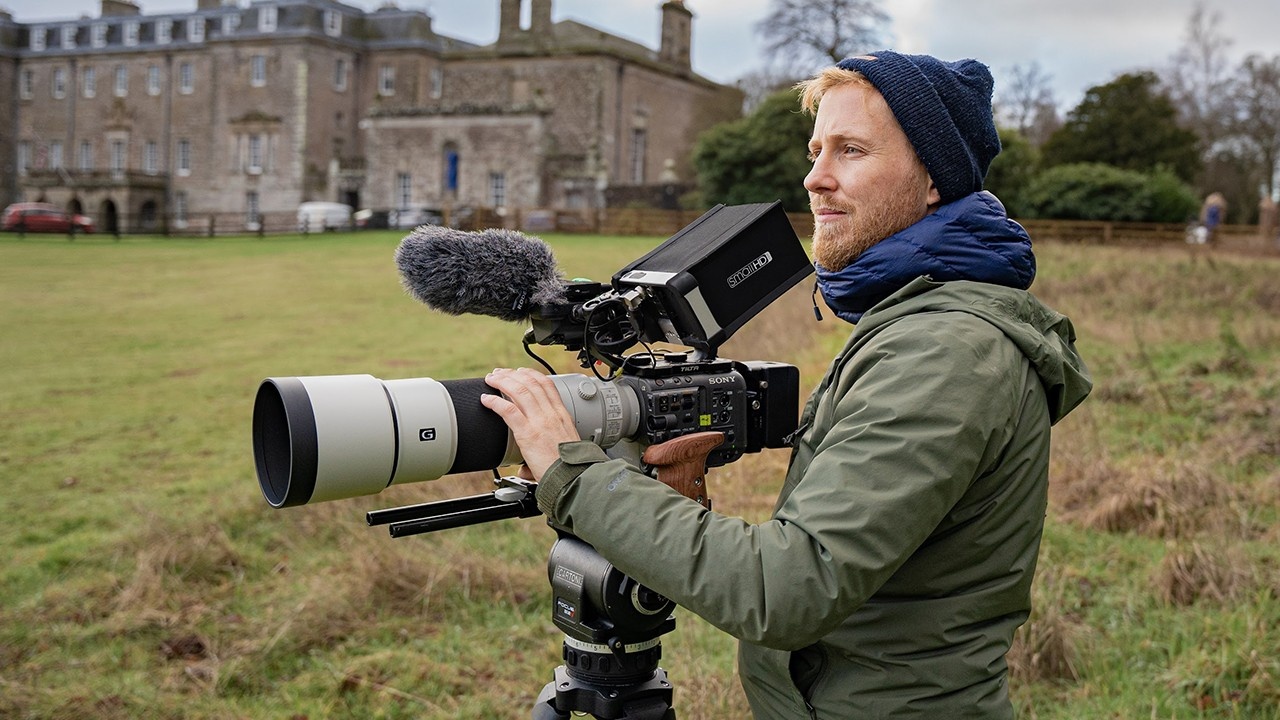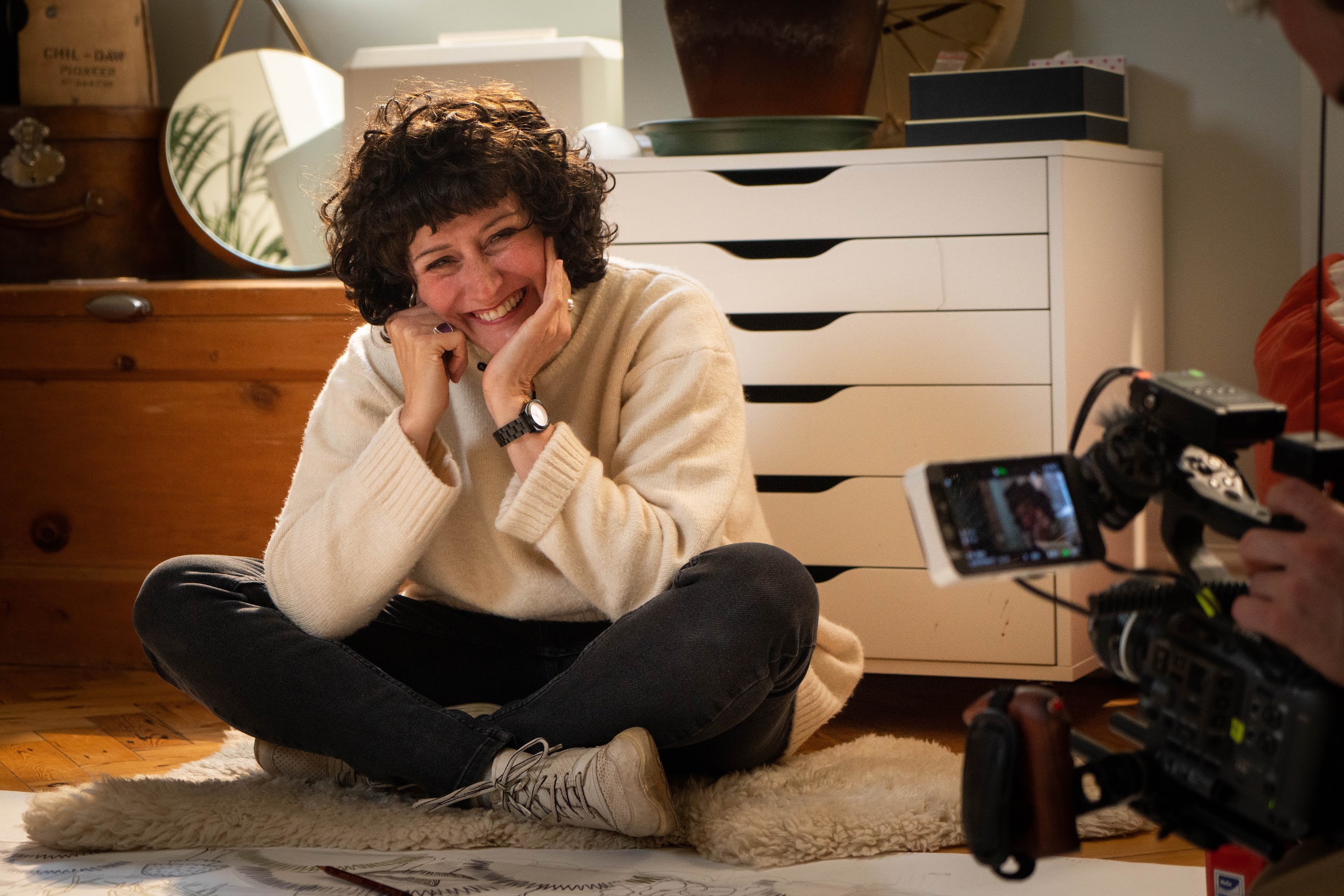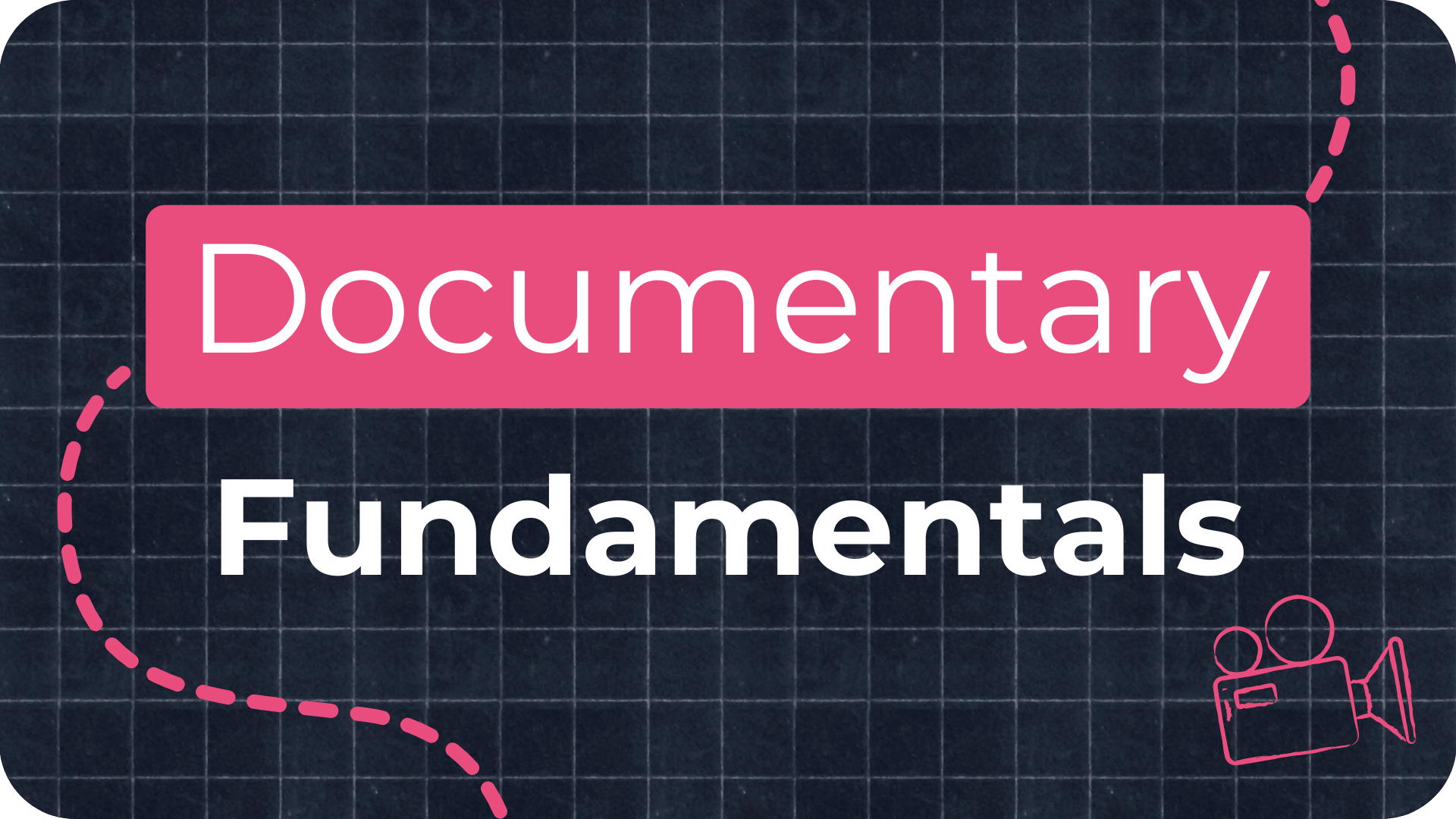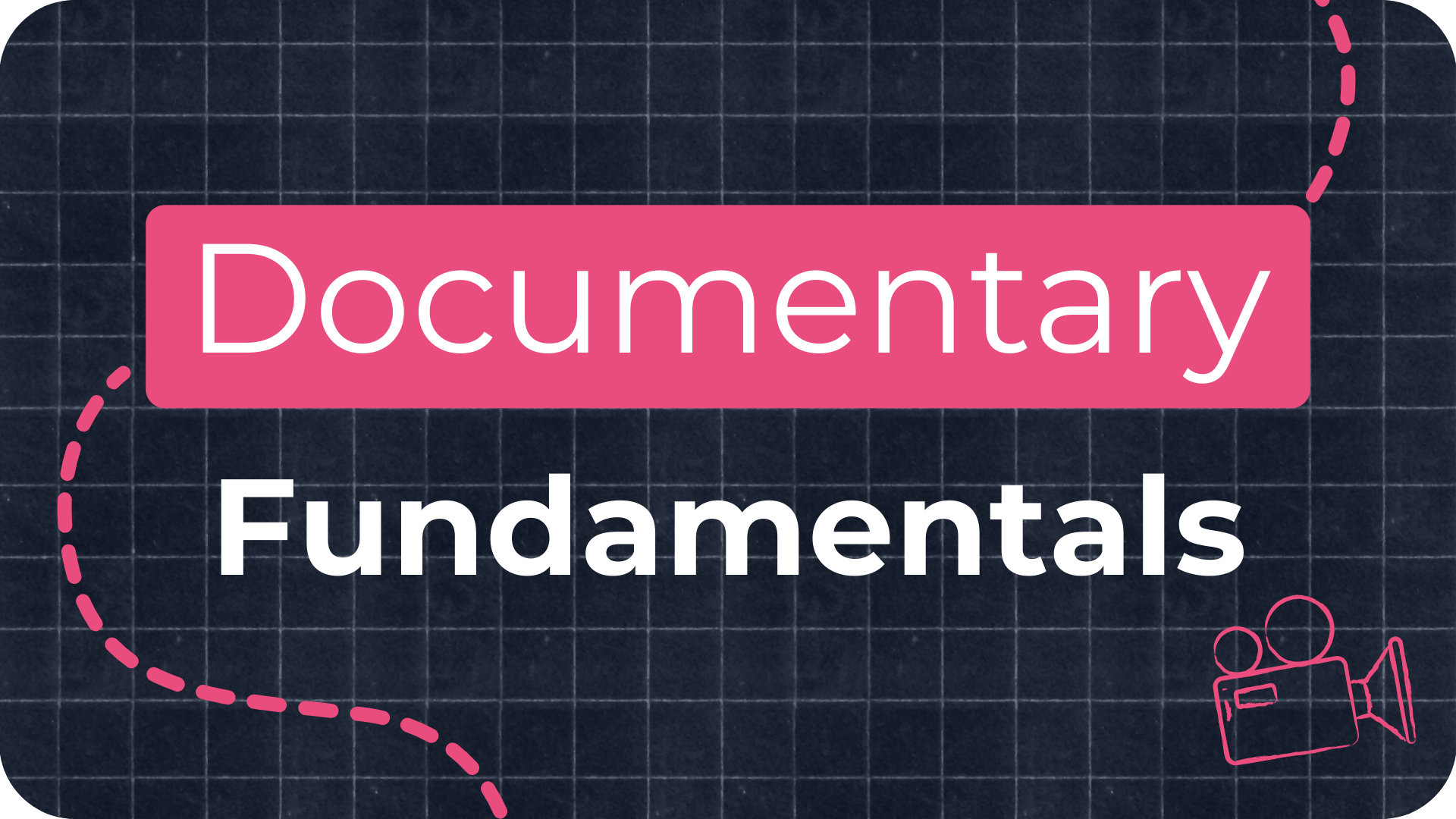Documentary Filmmaking Tips for Beginner Filmmakers

In this blog, I'm going to share 6 essential documentary filmmaking tips that I wish I’d known when I first started out making films over 15 years ago.
How To Become A Better Filmmaker
If I’d known even just a couple of these tips, it would have saved me a lot of time and frustration.
So to save you from making the same frustrating mistakes I did, and to help you make compelling documentaries, here are 6 essential tips all documentary filmmakers should know:
Documentary Filmmaking 101: A Beginner's Guide
1. Find a compelling documentary subject
If you make a film about someone who doesn’t have an engaging story, you’ll get to editing your doc and you’ll be pulling your hair out, trying to make it all work.
So, how do you know if you’ve found the right character for your film?
Well, all good stories have a character that wants something. For example, in my freediving short film One Breath, the main character, Cristina wants to attempt a world record dive with her husband, Eusebio. This want then sets Cristinia off on her journey as she attempts to achieve this goal. If Cristinia didn’t have a want and she was just freediving, we’d have a topic, but no story. And this a mistake I see so many filmmakers making. They’re really excited about a certain subject matter, like for me with freediving, and there’s lots of cool visuals to go along with it. But there’s no story, no journey to go on, because the main character doesn’t have a strong desire to achieve something.
Next is external and internal obstacles. So when a character is working towards achieving their goal, you want to make make sure you’ve chosen a character that has to overcome tough obstacles to achieve their goal, otherwise if it comes easily to them, it’s boring for an audience to watch. The harder it is for the main character to achieve their goal, the more the audience will feel invested in your documentary.
For example if the main characters want is to get dinner, if they live next to a fast food restaurant and it takes them only a few minutes to get the food, with very little effort. That’s going to be a boring documentary to watch and the audience won’t be invested.
Where as if the character is stranded on a desert island with nothing more than the clothes on their back and has to hunt for the food, then prepare it, make a fire and cook it. This is going to be a lot more engaging and compelling to watch, as there’s many more obstacles to overcome in achieving their goal.
So what’s the difference between an internal and external obstacle?
Well, externall obstacles are what’s happening in the character’s physical world. The externa obstaclel in One Breath is the lack of oxygen underwater and the huge pressure this puts on Cristina and Eusebio’s bodies.
And the internal obstacles are what’s going on for the character emotionally.
So for Cristinia this is the mental strength free-dive training takes.
All great documentaries focus on a character that is going through internal and external obstacles.
Then we have stakes. A stake is what is at risk if the character fails to achieve their goal. In One Breath, the stakes are high because failure means life or death. The higher the stakes, the more compelling the story.

2. Create a documentary treatment
It's very tempting to want to start shooting your documentary right away without creating a treatment. However, if you don’t have a focus or direction, you may have to reshoot big chunks of your documentary because the material that you’ve captured, doesn’t fit the story or isn’t engaging.
Creating a documentary treatment helps give your documentary focus and helps you to make decisions when filming that will make putting the story together in post-production much easier.
So what are some things you should include in a documentary treatment?
- First up a Title & Logline — ideally keep your title to no more than three words
- Then a Synopsis — where you introduce your main character and summarise the story
- Then Filmmaking approach — where you talk about your personal filmmaking style and vision for the project
- Then The team — where you show why you and your team are the best people to make this film
- Then Budget — where you state your budget for potential investors to weigh up
- And Distribution — where you set out your aims for where you’d like the film to be shown.
To save you time, you can access my go-to documentary treatment template here: Get your free documentary filmmaking treatment
Once you’ve created a treatment, you’ll find it’s really useful to share with potential investors, crew members and fans so they can see what your project is about, and what it will look and feel like, without you having to spend ages trying to explain it to them. And as a result, they will take your project more seriously.

3. Assemble a team to help you make your documentary film
When I first started out making films this was something I really struggled with as no one else in my community was making films and all the professionals I found online was too busy to help out, so I just felt stuck. I then tried making films by myself and this was great for learning the basics of filmmaking but I quickly realised in order to move forwards in my filmmaking journey, I needed to collaborate with other filmmakers. So how do you find a crew when getting ready to shoot your documentary?
You can do this by:
- Connecting with fellow filmmakers online: Reach out on our Members Facebook page, and remember the key to building strong working relationships is to show interest and add value first, and then share your projects.
- Attend Film Events: Attend film festivals and premieres in your local area, introduce yourself to other filmmakers and offer to take them out for a coffee and help out on their next film.
- Contact Local Film Schools: Get in touch with their reception, or through their Facebook group and ask teachers if they could recommend their star pupils.
- Ask Friends & Family: They don’t need to be experienced, just run them through exactly what you need them to do beforehand and have fun!

4. Create sequences not shots for your documentary film
When I first started making documentaries I would just try and create beautiful shots and not think about the edit and how the scene would come together.
It’s much better to get a couple of incredible sequences rather than lots of random shots that don’t make very good sequences.
I'd recommend just using one camera and following what’s called the five-shot rule. This is a technique that was popularized by Michael Roseblum who trained video journalist students at the BBC with this technique. So the five-shot rule, as the name suggests, is where you film a sequence using five different camera angles. So I’m going to run through these five shots now to show you how to take a scene like this and turn it into a scene like this, just by using the five-shot rule and then piecing the different angles together in the edit:
- So first up you’ll want to film a close-up of your subject’s hands to show what is being done.
- Then film a close-up shot of your subject’s face.
- Then a wide shot showing where the scene is taking place.
- Then an over-the-shoulder shot of your subject.
- And lastly an unusual shot to show the scene unfolding - it’s up to you what camera angle you use. Just be creative with it, whether that means climbing up a tree to get a high angle, crawling on your belly to get a low angle or tilting your camera to get a dutch angle.
Using the five-shot rule will help you decide what angles to use when filming a scene, it’s especially useful if you have limited time to film. Once you’ve mastered the 5-shot rule, you can add, subtract and mix up the angles you use when filming a scene and start to develop your own visual style.

5. Capture great-sounding audio for your documentary film
When you’re on location filming, there’s so many different things to juggle: from camera equipment to lighting. With so much happening, it’s easy for seemingly small things to slip under the radar only to come back to bite you when you get to editing. Sound is definitely one of those things!
It’s often overlooked, but poor sound can really hurt a film and it’s often what makes a beginner filmmaker stand out like a sore thumb. When watching a film, people will generally forgive bad visuals for a few minutes, but with bad sound, people will stop watching within seconds. Remember, that what people hear is 50 percent of their viewing experience.
So how can you make sure you have great-sounding audio when filming your documentary?
- First up you want to Plan ahead—Visit your location in advance and plan how to minimise noise pollution and decide which is the best time of day to film.
- Next you don’t want to rely on your camera’s built-in microphone as your main source of audio—it’s a low quality mic. Instead, use a shotgun mic, Rode Mic or a lapel mic.
- Tip number three is placement of your microphone. The closer the mic is to your subject, the cleaner the sound. Try out different options and get creative.
- Next you want to check your audio recording level, especially for dialogue. Make sure your sound is always below zero decibels, otherwise it will distort. The sweet spot is around -10 dB.
- And lastly record a wild track — a couple minutes just capturing the local ambience of the location to help you smooth out cuts when editing.

6. Use a documentary editing workflow
When you get to editing your documentary it can feel very overwhelming as it’s hard to know where to begin when you have so much unorganised footage, photos and audio files to deal with. This daunting feeling can be paralyzing and it’s stopped me from finishing a film on more than one occasion when I was starting out. This was because I didn’t have a clear vision of what I wanted the film to be and I didn’t have the right techniques and strategies to approach organising and editing all the footage.
It’s taken me a lot of trial and error to learn these strategies and techniques and I’m going to run through some of them with you now, to help you edit your documentary so your film doesn’t get left and forgotten about on a harddrive in your desk draw.
Ingest & Backup Footage
The first thing I do to get ready for editing my documentary is ingest all the footage straight after the shoot. I use a piece of software called Hedge to do this as it allows you to make multiple backup copies of the media at the same time.
Watch Footage & Make Notes
I then watch all the footage that I’ve shot and then I make notes of the best moments, noting down the timecodes so I can easily find the footage again. I then look through all the archive material, photos and audio clips that I may want to use in the documentary and write notes about what material I think would be most useful and I’ll turn this into what’s called a ‘paper edit’, which is a basic breakdown of how I imagine the film will play out. This will always end up being different to how the final film turns out in the end, but it’s a great starting point to get the ball rolling.
Import Elements Into Editing Software
After that I import all the elements of the film into my editing software. I use Adobe Premiere Pro, however there’s lots of other great options out there like Final Cut Pro and Avid Media Composer.
Add Beats To Timeline
I then start laying my favourite shots onto the timeline and watch through them to start to get a feel of what works and what doesn't. When choosing your favourite shots, look for key emotional moments that make you feel something, whether that’s happiness, sadness, or fear. These scenes will then become the building blocks of your documentary.
Build Framework
Then it’s time to start building the framework of your documentary using the three act structure by narrowing your story down into a beginning, middle and end.
Refine and re-edit
Once you feel you’re in a good place with your story it’s time to refine and re-edit. Keep chopping, changing and adding footage, leave no stone unturned - try every piece of footage, see what works and doesn’t work. And feel free to mix and match the framework of your story. It’s not unusual to realise during the edit that the middle or end of the film actually gives more of an emotional punch to the story if put at the beginning or vice versa. It’s also a good idea to show the film to a test audience who have nothing to do with the project and are happy to give honest feedback. This is crucial as it’s easy to get so close to your documentary that you’re no longer objective and so can’t actually tell what’s good or bad about it. Sharing your documentary with an audience and seeing their reaction will help recalibrate your sense of what’s working and what needs to change.
If you'd like to dive deeper into the documentary editing process, I've created a free in-depth guide which you can get here: Documentary Editing Guide

How Do I Start Learning Filmmaking With No Experience?
To start learning filmmaking, you can start by watching lots of films and series to see different storytelling styles and techniques. Then, listen to the director's commentaries - this is a gold mine of information on how the film or series was made. Reading books on film theory, storytelling, and cinematography is another great place to start. But most importantly, get out there and make a film with whatever resources you have available to you, whether that's a smartphone or a friend's mirrorless camera. Also, engage with online communities, courses, and workshops to speed up your learning process. If you'd like to learn how to make a documentary, check out this blog: How To Make a Documentary: Step-by-step Guide
Am I Too Old To Start Filmmaking?
Age should never be a barrier to starting a filmmaking career. Beginning this journey later in life can actually be an advantage, as the richness of your life experiences can add depth and relatability to your storytelling. The democratisation of filmmaking in the digital age, with accessible technology and abundant online resources, makes it easier to learn and engage with filmmaking at any age. The industry is full of successful filmmakers who began later in life, proving that passion and dedication are key, not age. Your unique perspectives and experiences are valuable assets in the diverse world of filmmaking, making any time the right time to start this exciting and fulfilling journey.
How To Make a Good Documentary?
Making a good documentary transcends mere storytelling; it involves crafting an engaging narrative that resonates deeply with its audience, rooted in authenticity and driven by a clear purpose. The foundation of a compelling documentary is thorough research and a strong, focused subject. Choose a topic you are passionate about, one that offers fresh insights or sheds new light on an overlooked issue. Develop a perspective or a question that guides your exploration, ensuring your documentary has a clear direction and purpose. Engaging characters who can provide personal anecdotes and expert insights are crucial, as they bring the story to life and create emotional connections with the audience. High-quality, visually interesting footage, whether obtained through direct filming, archival materials, or creative visuals, adds depth and context, enhancing the storytelling. Sound design, including music and natural sound, plays a significant role in setting the tone and atmosphere, further immersing viewers in the experience. Editing is where the narrative truly takes shape, requiring a delicate balance between factual accuracy and narrative pacing to maintain interest and clarity. Finally, ethical considerations must guide the filmmaking process, respecting the dignity and integrity of subjects and the truth of the narrative. A good documentary not only informs and entertains but also inspires action and fosters understanding, leaving a lasting impact on its audience.
What is Documentary Style Filmmaking?
Documentary style filmmaking is a method of storytelling that captures real people, events, or issues as they naturally unfold. Unlike scripted films, this approach focuses on authenticity, often using handheld cameras, natural lighting, and unscripted dialogue. The aim is to observe and reveal truth rather than create fiction. In documentary filmmaking, the filmmaker plays the role of investigator, observer, or sometimes participant, depending on the story. This style can vary from cinéma vérité and observational techniques to more structured formats with interviews and voiceover narration. The common thread is a commitment to real-life stories told through a creative lens.
How do You Get Into Documentary Filmmaking?
To get into documentary filmmaking, start by watching a wide range of documentaries to understand different styles and techniques. Then, pick up a camera, any camera, and begin filming stories that interest you. You don’t need fancy equipment or a big crew to start. Focus on strong characters, clear themes, and visual storytelling. Practice editing, study story structure, and learn from free resources, online courses, or filmmaking communities. As you build your skills, collaborate with others and share your work. The best way to break into documentary filmmaking is by making films, short, imperfect ones at first, that help you learn by doing.
Free Documentary Filmmaking Training
If you want more value-packed tips like in this blog, I’ve put together a free documentary training video where I share how I make cinematic documentaries. Click here to sign up and get instant access.

















